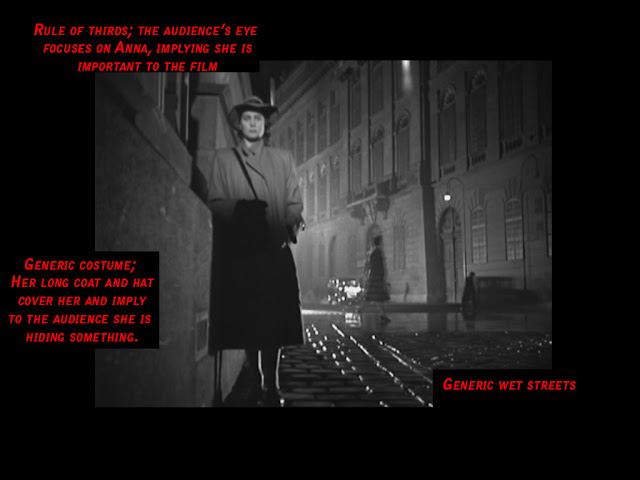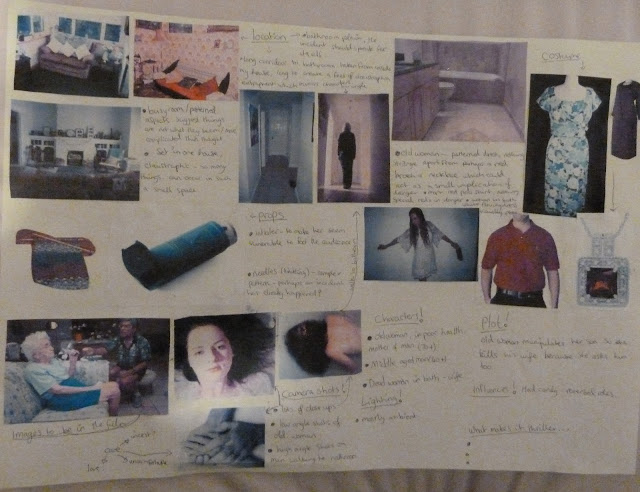User review taken from IMDB
"This is a rare film that is flawless in every respect. It combines great acting and memorable characters with a fascinating story, taking place in an interesting setting and adding a creative musical score. "The Third Man" is remembered for many things - for Orson Welles' wonderful performance in his appearances as Harry Lime, for its wonderfully appropriate musical score, and for its nicely conceived plot surprises. Adding to these is Joseph Cotten's fine portrayal of Holly Martins, which holds the rest of it together - it is his character who initiates most of the action, and also through whom we view everything and everyone else."
Professional review from The Guardian
"Watching it again, the theology of the piece is what emerged for me: the strange and sinful presumption of Harry Lime (Orson Welles) in faking his own death, the succession of betrayals in the lives of his friend Holly Martins (Joseph Cotten) and tragically loyal girlfriend Anna (Alida Valli), and Lime's gloomy afterlife, a damned soul in Vienna's hellish sewers.... What redemption can there be for Harry Lime, the grotesque exploiter of sick children? Could Anna and Holly's own growing love for each other, a sadder and wiser love, constitute some kind of secular forgiveness? A great film."
The title sequence begins of a full screen shot of a cultural signifier- a Zither. A Zither is a musical instrument common in Austria, this has been done to instantly tell the audience where it is set. The audience are able to hear Non diegetic sound- "The Harry Lime theme" which acts as a personification of Harry Limes character; upbeat, cheeky and attractive. It also relates to the common phrase "pulling someones strings" implying that Harry Lime knows how to pull peoples strings.
The film begins with various shots of war torn Vienna. At the time Vienna was divided into four parts and was governed by allied forces; France, America, Russia and Britain. We hear the Voice over of an anonymous British voice (the use of an anonymous narrator creates a sense of mystery) who mentions Vienna's old "Glamour and easy charm", this could even be considered as a reference to Harry Limes character. He goes on to further mention the thriving black market after the war, this implies that the narrator had some involvement within the black market creating an element of darkness and worry. We then see the sign
We then see an image of destroyed Vienna, which shocks the audience and creates sympathy. A boat is on its side and sinking- much like the people of Vienna and Holly if he continues to seek Harry. This also implies that there was a lot of trouble in Vienna at the time and what was once a thriving proud capital city had "sunk". Also we see a dead body lying amongst rubble, and ice. The film setting refers strongly to the films theme of corruption which is a common theme in thrillers.
We are then introduced to one of the main characters Holly Martins. The audience see a low angle shot of a silhouetted stream train, the use of the train is highly generic in thrillers as it creates high amounts of tension and mystery as we wonder who is getting off the train and why they have come to the new uncertain place overall making the audience feel anxious for them as they are in a state of venerability. Holly Martins is introduced wearing a Generic style costume of a thriller character, he is wearing a long coat, trilby hat and he is carrying a briefcase. This shows his character as mysterious and important as his hat and coat cover him and allow him to hide himself and the briefcase is a typical reference of mystery as it acts as an enigma. We then see a long shot is taken of him walking through the streets of Vienna, we then see him walk underneath a ladder. This acts as an ironic poke at superstition and foreshadows that bad things will happen to him, which in a sense could be considered dramatic irony.
He then enters a building, the audience see him walking up a generic stairways from a high angle shot making him look small. Non-ambient lighting has been used to created a long haunting shadow; this could represent another side to Holly however I personally think it represents Harry Limes character. Reed has used almost the same shot further on in the film when Harry is in the sewers, because we fully see his shadow at this stage I believe it foreshadows that he won't be able to escape. Stairways are a generic location as people are extremely vulnerable to falling. We then see a low angle shot as we see the Austrian man he is talking to, this shot has been used to make the Austrian seem important and powerful. He is speaking his native language and Reed has chosen to use no subtitles. This has been done to essentially create confusion for the audience, to make it seem like a nightmare and to see through Holly's eyes.
Analysis of various shots and characters and what thriller conventions have been used;
Use of canted shot;
Analysis of various shots and characters and what thriller conventions have been used;
The canted/slant/tilt shot is used frequently in The Third Man and is popular with the thriller genre as it can be used to mirror a character; to create a sense of nightmare and surrealism and also to connote imbalance, instability and transition.
*distortion
Setting;The location of the sewer plays an enormous role in The Third Man, and presents obvious thriller conventions such as Noir lighting, Claustrophobic spaces and the feel of a labyrinth. The use of the sewer firstly has been used by Reed to show that the only place where you are free is below the surface and acts as a reference to Harry's characters. He chooses to run to a "safe" location as above ground is like a maze, however we later find out that underground is too. The choice of location implies Harry is considered "a rat".
Anna Schmit;
Anna Schmit is the Femme Fatale within The Third Man, as the audience later find out she is in love with Harry- the charming villain, and her deviance is presented when the audience are made aware that she keeps false papers. She is an incredibly mysterious character, firstly the audience sense her mysteriousness when she is present at Harry's first funeral. In this scene she is considered as highly inscrutable as she shows no emotion as she watches her lover be put to rest, the audience can not tell what she is feeling. Secondly the audience feel she is mysterious when she is established as an actress. This instantly suggests that she is able to act, lie and to "wear masks" when she needs to and when she is forced to. The audience also view Anna as inscrutable and enigmatic as she walks away from Holly creating a very unexpected, unromantic ending.
*distortion
Setting;The location of the sewer plays an enormous role in The Third Man, and presents obvious thriller conventions such as Noir lighting, Claustrophobic spaces and the feel of a labyrinth. The use of the sewer firstly has been used by Reed to show that the only place where you are free is below the surface and acts as a reference to Harry's characters. He chooses to run to a "safe" location as above ground is like a maze, however we later find out that underground is too. The choice of location implies Harry is considered "a rat".
Anna Schmit;
Anna Schmit is the Femme Fatale within The Third Man, as the audience later find out she is in love with Harry- the charming villain, and her deviance is presented when the audience are made aware that she keeps false papers. She is an incredibly mysterious character, firstly the audience sense her mysteriousness when she is present at Harry's first funeral. In this scene she is considered as highly inscrutable as she shows no emotion as she watches her lover be put to rest, the audience can not tell what she is feeling. Secondly the audience feel she is mysterious when she is established as an actress. This instantly suggests that she is able to act, lie and to "wear masks" when she needs to and when she is forced to. The audience also view Anna as inscrutable and enigmatic as she walks away from Holly creating a very unexpected, unromantic ending.





















